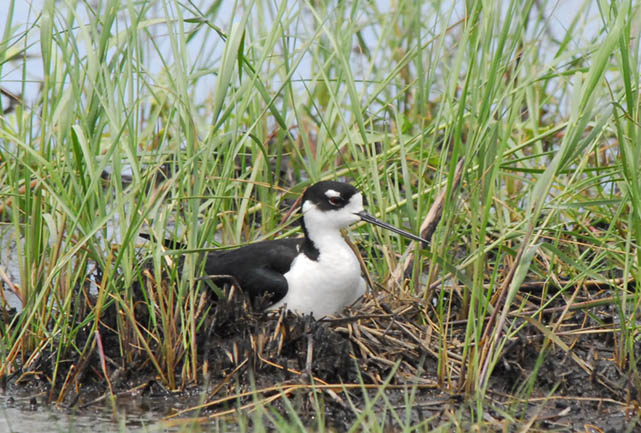Everyone with a love for nature and the outdoors should know that the purchase of a Stamp is not something that will just benefit ducks. Numerous kinds of shorebirds, long-legged waders and wetland and grassland song birds are dependent on habitat derived from Stamp purchases. Black-necked Stilt is just one of the non-waterfowl species that benefits from Stamp investment.

This graceful bird is often conspicuous in shallow freshwater and brackish ponds, open marshes, and flooded fields. With long legs, it strides along muddy shores or wades out in open waters. When in flight, the Black-necked Stilt will hold its bill straight out while its legs will dangle behind. Its nest is built along the shore or on little islands, often by a clump of reeds, grasses, or other vegetation. A nest may start low, but a rise in water brings more construction, resulting in a higher, yet well-built, floating platform.
Black-necked Stilts breed on much of our Atlantic, Pacific, and Gulf Coast wetlands and in scattered locations in the interior West. They winter from the coast of southern Oregon, Gulf Coast, and southern Florida south.
Refuges and WPAs can be crucial for families of Black-necked Stilts, especially when one considers the condition of ephemeral wetlands. Such ephemeral wetlands are not necessarily well protected – or even well understood or identified – under current regulations. These wetlands are usually small, often under two acres. They are often liable to be converted to other uses, including being drained for agricultural purposes. Inclusion of such wetlands in the Refuge System preserves them for many species, including Black-necked Stilt.